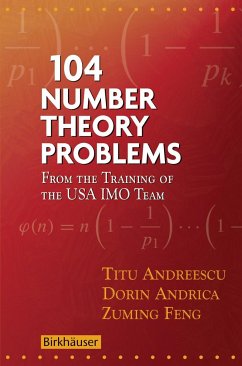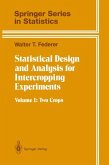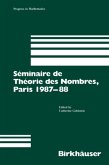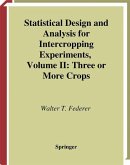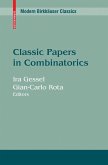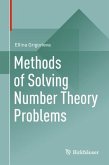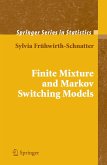This challenging problem book is written by renowned US Olympiad coaches, mathematics teachers, and researchers. It develops a multitude of problem-solving skills needed to excel in mathematical contests and in mathematical research in number theory.
This book contains 104 of the best problems used in the training and testing of the U. S. International Mathematical Olympiad (IMO) team. It is not a collection of very dif?cult, and impenetrable questions. Rather, the book gradually builds students' number-theoretic skills and techniques. The ?rst chapter provides a comprehensive introduction to number theory and its mathematical structures. This chapter can serve as a textbook for a short course in number theory. This work aims to broaden students' view of mathematics and better prepare them for possible participation in various mathematical competitions. It provides in-depth enrichment in important areas of number theory by reorganizing and enhancing students' problem-solving tactics and strategies. The book further stimulates s- dents' interest for the future study of mathematics. In the United States of America, the selection process leading to participation in the International Mathematical Olympiad (IMO) consists of a series ofnational contests called the American Mathematics Contest 10 (AMC 10), the American Mathematics Contest 12 (AMC 12), the American Invitational Mathematics - amination (AIME), and the United States of America Mathematical Olympiad (USAMO). Participation in the AIME and the USAMO is by invitation only, based on performance in the preceding exams of the sequence. The Mathematical Olympiad Summer Program (MOSP) is a four-week intensive training program for approximately ?fty very promising students who have risen to the top in the American Mathematics Competitions.
This book contains 104 of the best problems used in the training and testing of the U. S. International Mathematical Olympiad (IMO) team. It is not a collection of very dif?cult, and impenetrable questions. Rather, the book gradually builds students' number-theoretic skills and techniques. The ?rst chapter provides a comprehensive introduction to number theory and its mathematical structures. This chapter can serve as a textbook for a short course in number theory. This work aims to broaden students' view of mathematics and better prepare them for possible participation in various mathematical competitions. It provides in-depth enrichment in important areas of number theory by reorganizing and enhancing students' problem-solving tactics and strategies. The book further stimulates s- dents' interest for the future study of mathematics. In the United States of America, the selection process leading to participation in the International Mathematical Olympiad (IMO) consists of a series ofnational contests called the American Mathematics Contest 10 (AMC 10), the American Mathematics Contest 12 (AMC 12), the American Invitational Mathematics - amination (AIME), and the United States of America Mathematical Olympiad (USAMO). Participation in the AIME and the USAMO is by invitation only, based on performance in the preceding exams of the sequence. The Mathematical Olympiad Summer Program (MOSP) is a four-week intensive training program for approximately ?fty very promising students who have risen to the top in the American Mathematics Competitions.
From the reviews:
"In short, this book is a very valuable tool for any student/coach interested in preparing for mathematics competitions, especially the International Mathematical Olympiad. College students participating in the Putnam competition might also find quite a few interesting problems. Moreover, any course in number theory could be supplemented with this book and could use some of the references included. Even research mathematicians working in number theory will find this book of value in their pursuits." -MAA Online
"The names of the authors sound familiar for teachers of mathematics and mathematicians who use books of these types ... . I am sure about the success of this book. It is going to be a 'bestseller'. It can be useful for high school students preparing for contests, and for teachers helping them all over the world. I am also reliant on being able to insert some excellent problems of the book into the syllabus of number theory coursesat university level." (József Kosztolányi, Acta Scientiarum Mathematicarum, Vol. 73, 2007)
"The book starts with a gentle introduction to number theory. It serves for a training of the participants of the U. S. International Mathematical Olympiad. ... The 104 problems are carefully selected. ... The solutions are also carefully presented." (J. Schoissengeier, Monatshefte für Mathematik, Vol. 156 (3), March, 2009)
"In short, this book is a very valuable tool for any student/coach interested in preparing for mathematics competitions, especially the International Mathematical Olympiad. College students participating in the Putnam competition might also find quite a few interesting problems. Moreover, any course in number theory could be supplemented with this book and could use some of the references included. Even research mathematicians working in number theory will find this book of value in their pursuits." -MAA Online
"The names of the authors sound familiar for teachers of mathematics and mathematicians who use books of these types ... . I am sure about the success of this book. It is going to be a 'bestseller'. It can be useful for high school students preparing for contests, and for teachers helping them all over the world. I am also reliant on being able to insert some excellent problems of the book into the syllabus of number theory coursesat university level." (József Kosztolányi, Acta Scientiarum Mathematicarum, Vol. 73, 2007)
"The book starts with a gentle introduction to number theory. It serves for a training of the participants of the U. S. International Mathematical Olympiad. ... The 104 problems are carefully selected. ... The solutions are also carefully presented." (J. Schoissengeier, Monatshefte für Mathematik, Vol. 156 (3), March, 2009)

